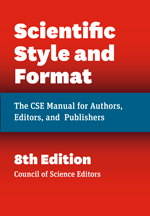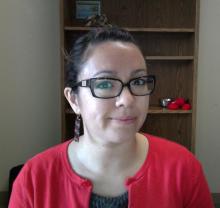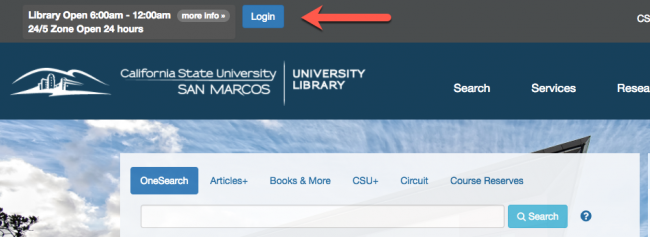Using the Library
BIOL 212 Evolution Using the Library
- When you're off campus, remember to log in to access library resources.
- Get help:
- By using the "Ask Us!" chat on the library homepage, or
- Make an appointment with me.
- Finding a specific article. If your professor has given you the information for an article, find the full text by using the “Looking for a specific article” link on the library website.
- Click on the "Article" tab, fill out the relevant information, and click "Go".
- Click on the "Article" tab, fill out the relevant information, and click "Go".
Types of Literature
BIOL 211 Kai Literature Terminology
Literature Terminology
For your reports, you will need to incorporate a number of different types of sources. Make sure you understand the difference!
Watch this tutorial to learn about the peer-review process.
Examples of different types of literature:
- Literature Review - (peer-reviewed, secondary)
- Empirical Study - (peer-reviewed, primary)
Terminology review |
| Journal (in this case, journal = 'scholarly journal' = 'academic journal' = 'research journal') The main mode of communication by professionals in a field; this regular publication provides the venue where researchers share research, perspectives, and other scholarly communication. Published every week, month, or every few months like a normal magazine. |
| Electronic journal A journal that happens to be 'published' online. There is no difference between a journal that is published in print (like a normal magazine) and a journal that is published online. |
| Peer-review The process by which original research submitted for publication in a journal is reviewed by other experts (peers) in a particular field. Research is checked by these other experts for data quality, methodology, and if the research is a unique contribution to knowledge in a particular field. |
| Peer-reviewed journal article A journal article that has undergone peer-review. |
| Primary literature (= 'professional literature' = 'research literature' = 'empirical study') Another way to describe journal articles that provide the actual data collected, how it was collected, data analysis, and conclusions. |
| Literature review (in addition to Literature Review articles, this is also often included in the "introduction" or "background" portions of empirical articles) A scientific article could be a "literature review" summarizing, analyzing, synthesizing other scholars research. When it is part of a research article, the literature review will also discuss how the research that is to be discussed helps to provide further knowledge on the subject. |

Search Strategies
BIOL 212 Evolution Search Strategies
Information is messy and often hard to find because there are many tools and formats to deal with. When searching databaes, the library catalog, and the open web (Google), it helps to know some tricks to improve your results. Start with Advanced Search so you can get more options. Try the following when you search:
- Breaking your terms into concepts/keywords
- Searching by title
- Using phrase searching (with quotation marks) to keep terms together
Consider the following:
|
What words should you use? |
Think of what your main concepts are and try to narrow it down to that. For example: “climate change” AND adaptation “climate change” AND “extreme weather” “climate change” AND mitigation |
Watch this tutorial on how to search in the databases.
Biology Databases
BIOL 212 Evolution Biology Databases
BIOL 212: Finding Articles
For your research paper, you'll be expected to find information sources, or evidence, that supports your claims. This evidence will be published in periodicals - news, magazine, and academic or scholarly journals. These articles are found in databases. Databases can have BOTH scholarly and non-scholarly articles.
Biological Abstracts
A complete collection of bibliographic references covering life science and biomedical research literature published from more than 4,000 journals internationally.
Coverage: 1969 - current
Academic Search Premier
This scholarly collection offers information in nearly every area of academic study including: computer sciences, engineering, physics, chemistry, language and linguistics, arts & literature, medical sciences, ethnic studies, and many more.
Coverage: 1975 - current
Click on "Get-It! @ CSUSM" to access our library journals
NOTE: If you are off-campus, you must log into Google Scholar through the library website or "Get-It" will not show up.
Other places to look: Biology Research Databases
Citations
CSE Citation Style (General)
What is CSE Style?
Each discipline uses a different citation style. In Biology, the most commonly used style is CSE. CSE uses three different formats: citation-sequence, citation-name, and name-year -- you will want to check with your professor to see which format they prefer.
Citation-sequence: Citations are included in a numbered list at the end of the paper, in the order in which they appear in the text. Within the text of your paper, use superscript numbers to refer to the corresponding citation in your citation list.
Citation-name: Citations are included in a numbered list at the end of the paper in a numbered list, in alphabetical order by author last name. Within the text of your paper, use superscript numbers to refer to the corresponding citation in your list.
Name-year: Citations are listed at the end of the paper in alphabetical order by author last name, but not numbered. Within the text of your paper, cite sources by using the author's last name followed by the year of publication in parentheses. For example: Jones (2005).
CSE Tips
CSE uses journal title abbreviations:
- To find the abbreviation, go to: https://www.ncbi.nlm.nih.gov/nlmcatalog/journals
- Search for your journal title by name
- Click on the record for your journal and copy/paste the ISO 4 abbreviation
A couple of examples:
|
Journal Article |
Author AA, Author BB. Article title. Journal Abbrev. Year;volume(issues):pages. URL (if any). doi (if any). |
|
Newspaper/Magazine Article |
Author AA. Article title. Newspaper Title. Year Mo Date. URL. |
|
Webpage |
Author AA, Author BB. Title of homepage/website. Place of publication: Publisher; Date of publication [dated updated; date accessed]. URL. |
CSE Guides & Resources
These resources may provide you with additional help and examples.
- CSUSM Quick Guide to CSE Style
- Need help? Watch this tutorial on how to cite in CSE.
- Scientific Style and Format Citation Quick Guide (Univ of Chicago Press)
- Council of Science Editors Documentation Style (The Writing Center @ the University of Wisconsin - Madison)
- Scientific Style and Format: The CSE Manual for Authors, Editors, and Publishers (Northwest Missouri State University B.D. Owens Library)
CSE Manual at CSUSM Library

The most current version (eighth edition) of Scientific Style and Format: The CSE Manual for Authors, Editors, and Publishers was published in 2014.
Library copy (T11 .S386 2014)
The CSUSM Library owns a copy of the official CSE manual that you can consult in person.
Not sure how to write your citations?
Get started with this flow chart created by CSUSM librarians.
How to Write a Citation: a flowchart
Sitewide guides menu
Talitha Matlin

760-750-4342
KEL 3423


